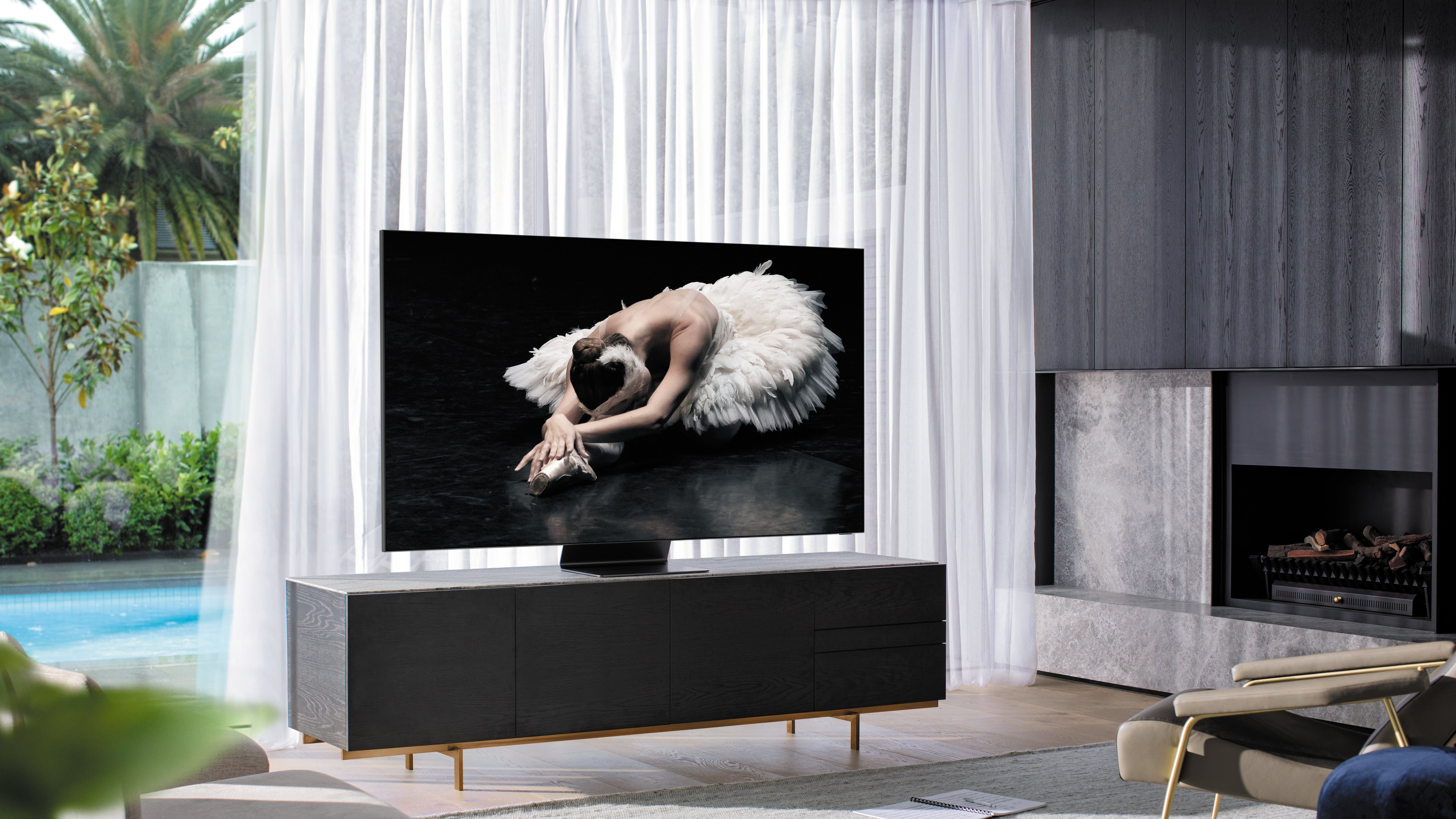After years of playing second fiddle to picture quality, TV sound is enjoying something of a renaissance, thanks to innovative sound technologies like Sony’s Acoustic Surface technology and Samsung’s Object Tracking Sound (OTS).
But what do they offer, and how are they different from each other?
Back in the early days of Pro-Logic surround sound, television audio actually took a giant leap forward with the CRT TV, which came bundled with additional speakers and Dolby decoders. But the move to LCD flat panels put an end to audio improvement. For nearly a decade, sound suffered as picture clarity and TV design moved centre stage. It was only with the arrival of the soundbar, did viewers realise what their ears had been missing.
Today, with incremental improvements in picture quality harder to sell, TV manufacturers are once again looking at ways to improve the TV audio experience. There’s no consensus of approach, though, which is leading to some exciting choices (if some confusion) for buyers.
Sony and Samsung, with their aforementioned technologies, are leading the way when it comes to better sound from on-board audio, but they’ve taken very different approaches. Here’s what you need to know.
- Best TVs for sound: television sets worth listening to
Sony Acoustic Surface Audio explained
Sony OLED screens use Acoustic Surface audio technology to deliver immersive sound (literally) from the surface of the TV screen. We’ve seen several iterations of Acoustic Surface audio since its launch, most recently Acoustic Surface+, but all adopt the same approach.
Rather than utilise conventional speaker drivers, be they forward - or downward -firing, the Sony system relies on actuators which literally vibrate the television’s panel, in turn creating treble and mid-range audio.
These actuators connect directly to the rear of the panel, housed in aluminium baskets, which enhance rigidity for improved dynamics. And no, you can’t see the screen vibrate, even at high volumes.
These Sony TVs use either two (a stereo pair) or three (adding a centre channel) actuators, which allow sounds to be panned and positioned on the screen relative to the original sonic mix. This allows for a true stereo image with clearly defined dialogue, with vocals locked dead centre.
It’s ingenious design, but the actuators have a limit in that they can’t deliver low bass. They’re best suited for mid and high frequencies. So Sony partners them with a more conventional subwoofer on the rear of the set. This fleshes out the soundstage and adds movie-style rumble.

This use of actuators also allows the TV to be used as a centre channel speaker in a larger home theatre layout that employs separate speakers for left, right and surround duties – aggregating the set’s various amplifier modules together and re-amplifying the input signal.
Acoustic Surface technology, coupled with Sony’s own S-Force audio processor, also allows for a virtual soundstage. The technology is compatible with stereo, 5.1 and Dolby Atmos sound sources.
The catch is Sony can’t use its actuator audio system with LED LCD TVs, as it has to vibrate the panel, and LED sets have a backlight that gets in the way. So it’s taken a different, but related, approach to deliver better on board audio.
Unveiled for the first time at the 2020 CES expo, Sony introduced the Frame Tweeter which quite literally, turns the frame of its ZH8 8K flagship set into a speaker.
This Frame Tweeter technology literally vibrates the frame of the TV, creating treble audio that appears to be coming directly from the screen. Sony told us that it had to audition a plethora of different metal materials, in order to find one which vibrated at the right frequencies. Remarkably, what it’s engineers have come up with works rather well. The treble is sharp and clean, and achieves exactly what it sets out to do.
The downside is that the technology is inherently expensive – and coupled with pricey OLED panel tech – so don’t expect it to migrate too far down the TV value chain just yet.

Samsung OTS Object tracking Sound explained
Samsung’s rival TV sound system is OTS (Object Tracking Sound), which, like Acoustic Surface Audio, adds directionality to onscreen movement. It uses software allied to tiny conventional drivers to achieve the effect.
With OTS, dialogue is locked centre stage, while objects appear to pan around. QLED models with OTS (the Q80T and up) hide an additional pair of speakers top left and right, at the rear. As a result, the TV presents an unusually wide, high soundstage.
The more tiny speakers built-into the cabinet of the set, the more immersive the listening experience becomes.
The premium Samsung Q950TS boasts a 4.2.2 speaker configuration, as it has tiny drivers placed top, bottom and on the sides of the screen, driven by object tracking software which handles soundstage steering.
The set also comes with integrated sound calibration, using the microphone built in to the remote control, to optimise performance for your listening room.
Perhaps the most inventive audio innovation from Samsung is dubbed Symphony Sound. Rather than simply delegating audio duties to an attached soundbar using HDMI ARC, Symphony sound integrates a compatible Samsung soundbar, like the Q900T, with its OTS sound system built into its TVs, to deliver an immersive Dolby Atmos listening experience from unified ‘bar and screen.
Image enhancements may continue to dominate TV headlines for the time being, but there’s genuine innovation coming from audio too. Listen out for more announcements when the virtual CES 2021 expo gets underway in January too.
- OLED vs QLED: the premium TV panel technologies compared
from TechRadar - All the latest technology news https://ift.tt/2KPOHMu
